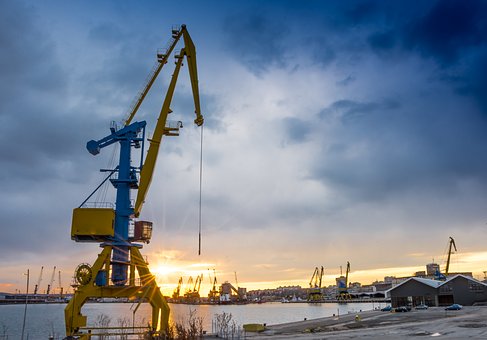Shipping Lanes

Each day millions of tonnes of cargo are shipped via the world's fleet of 50
,000 merchant ships. Although goods are transported all over the world, the vast majority of ship movements are confined to specific routes - otherwise known as 'sea lanes' or 'shipping lanes'.These are routes that are regularly used for all major ocean-going vessels, including privately owned boats and recreational passenger ships. However the majority of vessels which travel the world's shipping lanes are exactly that - shipping vessels.
For the most part ships not engaged in trading will stay clear but close to shipping lanes to avoid the possibility of any kind of collision with a large, less manoeuvrable cargo ship.
Although still an important part of maritime transport, shipping lanes have inarguably become slightly less essential than they once were. When they were originally created in the time of sailing ships, they were absolutely critical to any kind of safe voyage.
Shipping lanes were chosen to take full advantage of the prevailing winds that would take ships across the sea in the best time. It was well known among sailors that what we now call 'trade winds' would allow ships to travel to the west quickly, whilst the 'westerlies' would allow ships to travel to the east.
Based on these headwinds, maritime organisations divined the best routes for efficient sea travel, combing the direction of the winds with the flow of known ocean currents. Of course in several cases the concerns of physical geography meant that shipping lanes were often less than optimal for simple travel; many, such as the shipping lanes from Cape Town to Rio De Janeiro, were chosen based on the importance of the cities and landmasses that they passed close to.
Today, shipping lanes are still an essential part of the maritime world. Even though ships are no longer dependent on favourable winds, they are still dependent on the waves that the wind can cause. Vessels with a large surface area can still be affected by heeling (the lean caused by the winds force) and therefore it is still useful to follow the overall direction of trade winds and westerlies.
Shipping lanes provide a useful means of managing international seaborne traffic, particularly in regards to larger ships which require a significant depth for safe travel. Whilst sea travel is fairly safe, the ocean can still be a dangerous place and the use of shipping lanes means that certain areas of the sea will always be 'busy' (at least, busier than other areas), making them extremely useful for boaters who are in distress.
by: grundlew Interactive global marketplace and business network Bufinder.com Global Sim Cards- Say Sayonara To Pile Of Sim Cards! Global Market For Light-emitting-diodes For Lighting Application To Be Worth $8.2 Billion In 2014 Global Photocatalysts Market To Be Worth $1.7 Billion In 2014 How Does Iso 9000 Apply To Shipping? Is China Still Competitive For Global Manufacturers? e-foods global - Unique Storage Meals for Emergencies How Can A Company Impact Global Water Usage? Global Solar Thermal Market Impressive Growth In Installations From 2010 Onward An Amway Global Review Demand-supply Imbalance In The Global Fiber Glass Industry - Market Research Reports On Aarkstore En How a UK Prenuptial Agreement Can Protect Global Assets
 Passionate Your Web Design, Boost Your Business, Grow Globally